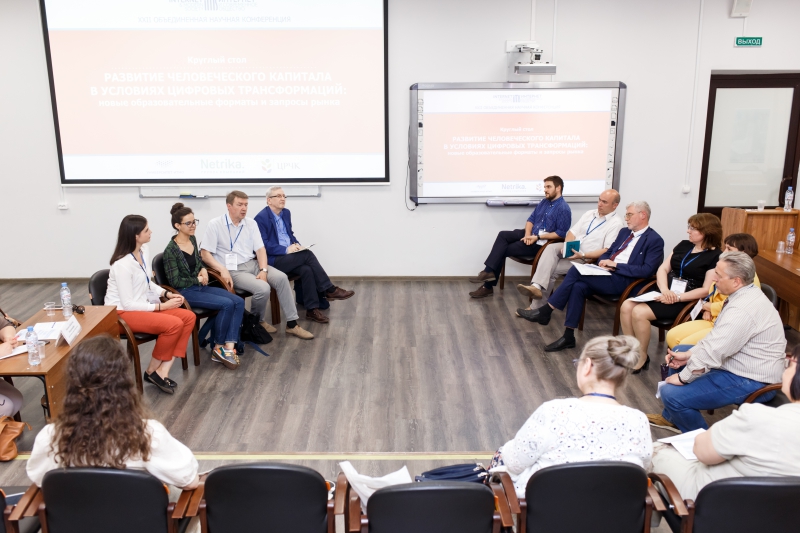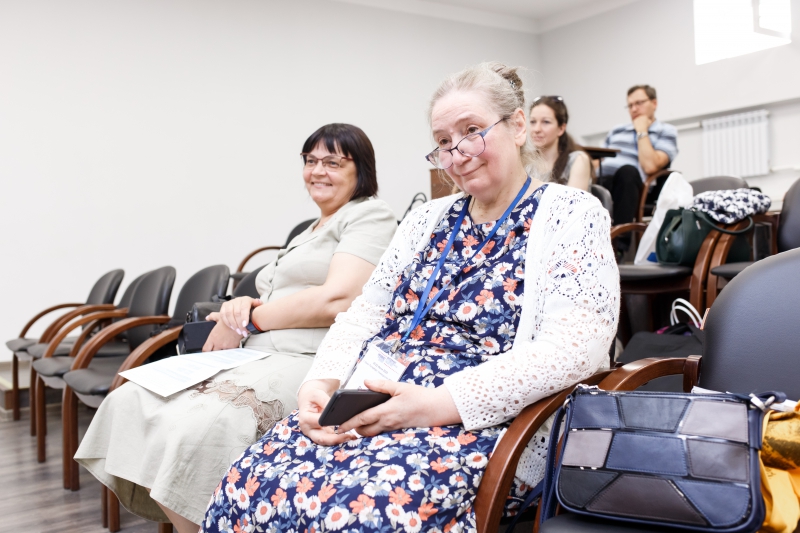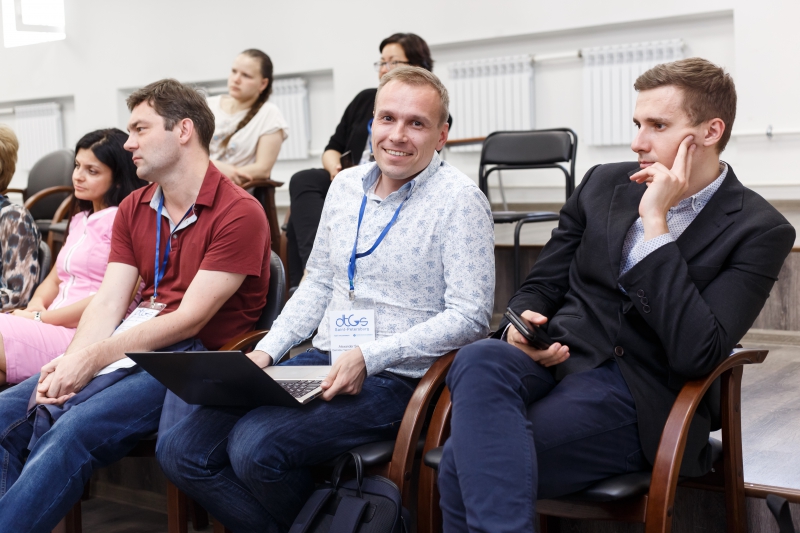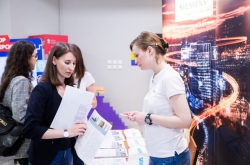What is the concept behind the Human Сapital Development Platform?
There is a misunderstanding between employers and those who work in the field of education. Three years ago, to solve this problem, we came up with the idea of this platform. Now it’s already much more than just a platform, it’s an entire digital ecosystem, which doesn’t generate new solutions but serves as an aggregator of automated services on a regional level. This system has its own database and services and can be easily integrated with the already existing and developed institutional information systems.
The developers not only have to automate various functional capabilities, but also take into account the humanitarian aspect, which implies the creation of an individual development trajectory for students aged from 12 years to 24 years old, as well as adult citizens. Such trajectories allow students to create their individual professional development plans and discuss it with an expert. This provides prospective employees with opportunities for social mobility.
Upon registration on the platform, each user is offered to take a certain test which explores various scenarios. The system applies different organizational models depending on users’ needs, that is there’ll be one model for children and students and another for those willing to undergo professional retraining. For example, in case of an individual professional development trajectory, our users can be offered to build a competency map for current processes and positions in demand.
The platform’s focus is not only on public authorities, even though they are our main clients, but also on citizens of the region. A total of five Russian regions have already expressed their interest in the platform.

Why is it now that you decided to develop this platform?
This decision has to do with short-term and medium-term planning for the future employee pool, and it’s up to the government to make it. There were questions about how many employees we lacked and why. This is how the idea emerged that it would be good to organize the information space in such a way that would allow for planning and analytics.
Our company pays great attention to the analytical aspect: from data collection to system analysis and business analysis. When participating in discussions and conferences, we realized that it often happens that representatives of businesses and education don’t see eye to eye even when they are talking about the same thing. Today there are proposals from the Agency for Strategic Initiatives (ASI) on the competency map, but we decided to take a different approach and create an environment where people will be able to build such a map on their own. We are talking about a common language of interaction, which will be established in such an environment.

There are two main scenarios for the users of the platform right now: an individual trajectory for students and retraining programs for adults. Who is your target audience?
Our target audience is children from 12 years old to adults aged 65 years old. We would like to start working with toddlers because this is when parents start thinking about their kids’ development in sports, but we need some time to think it over. I think that 12 years old is a good age to start thinking about your future career.
So far, the automation development process has only been completed for the school students group. Going forward, we will proceed with the development of individual professional paths for adults, including those of pre-pension age. There’ll be specific tests and entrance points for each age. We have to focus on the aspects that people are actually interested in today. Our groups of questions have to take these aspects into account.
It is evident that engaging school and university students and people up to 50 years old will happen organically: most of them interact with digital platforms on a daily basis. How do you plan to reach out to people in the 60-65 years old category who typically do not have a lot of experience with digital platforms?
This was one of the main reasons that the Center of Human Capital Development was created. Right now the system has been developed in such a way that people in this age category can ask for a consultation either in the online mode or by making a telephone call. Having made a request, the user then proceeds to the stage of online or offline consultation.

How do you go about collaborating with business and the representative of the education community? To what degree are these parties ready to throw their weight behind such a project, and what do they need to do to support it?
The employers are forthcoming in their support because the way they see it is, if this is a state platform that covers the entire region, it means that important developments happen there and they need to keep abreast of that. Secondly, because this is a state platform, it attracts the organizations that directly participate in the development of human capital in the region, also having links with the government agencies, cooperating with which also holds interest for the employers. Thirdly, what we are talking about here is a comprehensive competencies map, and they are ready to collaborate on the project because this is very valuable to them. Employers are interested to know what the actual demand on their job vacancies from the candidates is.
As for the educational organizations, it can be said that they are the first party that needs this kind of unified information space. Presentation of educational programs does attract applicants, but the latter find it really hard to make the right choices regarding their future career. The platform is a perfect solution for targeted interaction between the users and educationals organizations.
The system also includes the organizations for the additional education of children, which are the school students’ first guide into the world of leisure, interests, and their future professions. It is the platform’s task to help them to choose their path and navigate them through the many events and programs for them to find those that best suit their interests.
It is thus, by working with users on the individual basis, that the system allows to transform human potential into the human capital of the region.
One of the solutions offered by the project comes in the form of tutorship and mentorship. Who will be responsible for providing expert support to the platform’s users?
Today, there are specialized programs that aim at the step-by-step development of tutors. First, it is checked to what degree a candidate is capable of asking the right questions and communicating on the person-to-person level. Then there is the second stage, represented by the analytical processing of information, followed by the third stage, when the foundation has been set and we proceed to the process of training individuals for providing online consultations and helping them reach a better understanding of their future mentees. The tutors we are talking about with regard to the platform are of that third, highest level.
The idea was put forward by the St. Petersburg’s Moscow District, where such a program is implemented with a focus on teachers. Training of these specialists will become one of the main activities of the Center of Human Capital Development. What we will get at the output will be specially trained professionals, not just experts in the field but authorized career guidance tutors.
Another solution forming part of the platform is a unified approach to the formation of competencies. How is this planned to be achieved?
Firstly, we are looking to assemble a body of data on the basis of the specific language and terms which will be generated on the platform through the process of the creation of job vacancies. We are still learning how to act on the latter in terms of coming with the right terms for employers’ needs and candidates’ competencies. We used professional standards in 33 fields; university standards present us with a massive amount of information that is quite complex in its structure. From these, we extract keywords and phrases and then match them up with key employer searches. It is based on these results that competencies are formed. After this, we proceed to field-specific processing.

The platform can be adapted to the operations of a corporate university. When that can happen and what are the advantages of this format?
This is one of the variations possible. The fact is that a lot of large, medium and even small enterprises want to train, develop, change their staff. They have a wide range of competency evaluation mechanisms and they conduct a lot of testing, advanced training, transfers from one department to another and much more. Therefore, the restructuring effected is adapted to these local mechanisms. The platform will make it possible to track the success of employees at the start and throughout the implementation process.
You have mentioned that several other regions have also expressed their interest in this platform. What is the regional coverage that you are aiming for, and do you face any difficulties in reaching that goal?
We began to be approached by others as soon as the prototype that had something of substance behind it was born. While the reactions we got were not very numerous three years ago, we’ve seen a notable increase in those since we started to participate in conferences and roundtables half a year ago and everyone saw the opportunities they could grasp. Evidently, such a platform involves a lot of complex work and funds. But we are proving that the methodology works. For example, when we broke through to the international level with our idea of the development of human capital and offered our 12 services, we won a grant for five countries of the Eurasian Economic Union. Now we are developing a unified digital ecosystem that would allow to register, evaluate and find employment for citizens moving between these countries or working remotely.
We have ambitions for the platform to cover the whole country. The project is a costly one, but the regions say that they can bear these costs to reap all the benefits. It has to be understood that even the creation of a one-region platform requires colossal effort and resources.
ITMO University is a partner of the company Netrika, and the roundtable on “Human Capital Development” as part of the conference “Internet and Modern Society” was organized under the aegis of the collaboration between the two organizations. ITMO University students and graduates actively conduct internships and find employment at the company, but Netrika’s most comprehensive cooperation is with the team of the director of E-Government Center and associate professor at Institute of Design & Urban Studies Andrey Chugunov, as well as with students of the Master’s program “Digital Technologies for Smart Cities” that is also headed by Prof. Chugunov. The students regularly participate in the implementation of the company’s cases.





